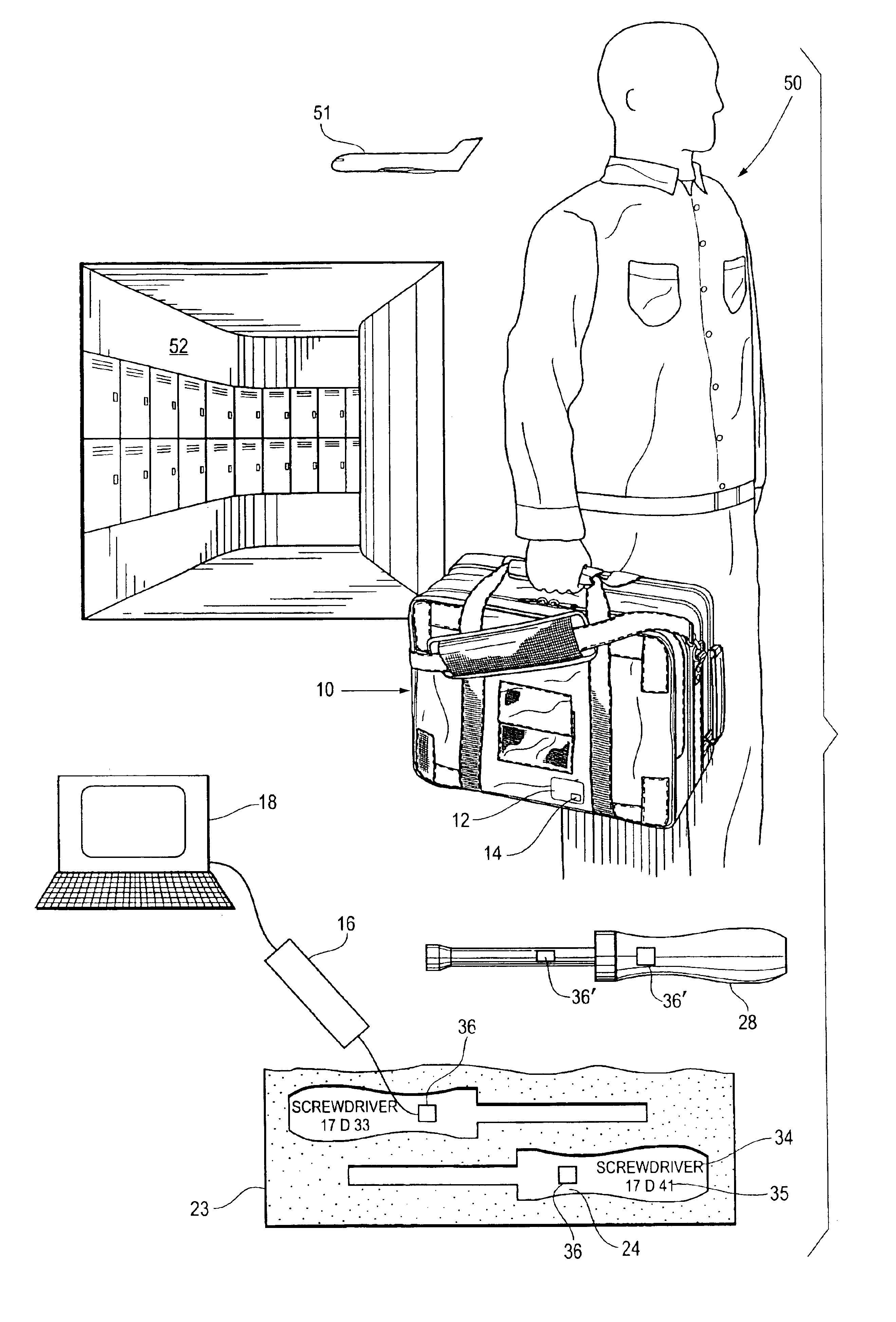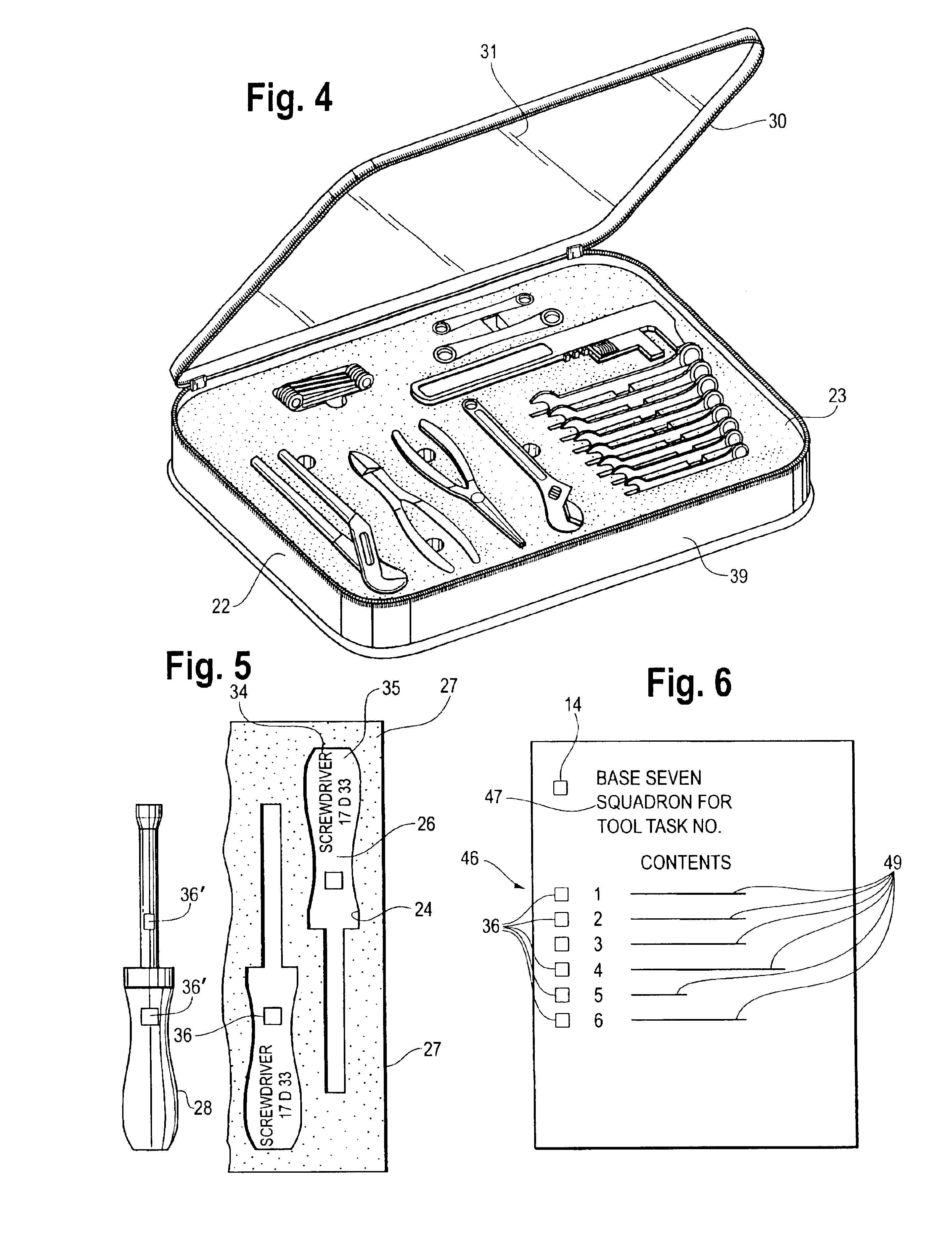Method of tracking tools
a technology of tracking tools and tools, applied in the field of tracking tools, can solve the problems of inability to positively identify the origin of the tool, the current system of controlling the tool does not provide for total tool accountability, and the information left in the engine of the aircraft could damage the engine and perhaps the whole plane, so as to protect against information loss, the effect of being readily available for later us
- Summary
- Abstract
- Description
- Claims
- Application Information
AI Technical Summary
Benefits of technology
Problems solved by technology
Method used
Image
Examples
Embodiment Construction
[0030]Referring to FIGS. 1-5 and 7, a set of tools needed to perform a task on a military base are stored in a suitable storage means. The most commonly used means of storing tools is a tool box having a plurality of drawers with the tools of the box laid out so that all the tools in the drawer are visible when the drawer is opened. Another commonly used method is to retain the tools on vertical boards, which line the perimeter of a work area. A third method used by mechanics who service combat planes that have returned from one mission and are to be made ready for a subsequent mission, employs a flexible bag that has a number of zippered compartments with two pallets of tools stored in each of the compartments. There are other methods of storing tools, but these are the methods most commonly used.
[0031]Referring to FIGS. 2 through 5, the tools of a certain set are, for the purpose of this discussion, stored in a flexible bag 10. The bag 10 has on its outer surface an identification...
PUM
 Login to View More
Login to View More Abstract
Description
Claims
Application Information
 Login to View More
Login to View More - R&D
- Intellectual Property
- Life Sciences
- Materials
- Tech Scout
- Unparalleled Data Quality
- Higher Quality Content
- 60% Fewer Hallucinations
Browse by: Latest US Patents, China's latest patents, Technical Efficacy Thesaurus, Application Domain, Technology Topic, Popular Technical Reports.
© 2025 PatSnap. All rights reserved.Legal|Privacy policy|Modern Slavery Act Transparency Statement|Sitemap|About US| Contact US: help@patsnap.com



